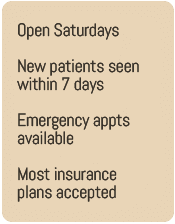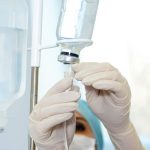What You Need to Know About Non-Hodgkin Lymphoma
Non-Hodgkin lymphoma is a type of blood cancer that affects the lymphatic system, which is part of the immune system. Our bodies produce white blood cells that fight infections and diseases. Non-Hodgkin lymphoma targets these cells. According to the American Cancer Society, it is the seventh most common cancer in the U.S., accounting for 4 percent of all cancer cases.
The term non-Hodgkin’s lymphoma can be used to identify different types of lymphoma with the same characteristics. There is another type of lymphoma called Hodgkin lymphoma, but it usually starts in the upper body. Non-Hodgkin lymphoma can begin in the lymph nodes anywhere in the body. The two diseases have different courses of treatment.
Cancerous lymph tissue associated with non-Hodgkin lymphoma is usually found in the lymph nodes, spleen, stomach, intestines, bone marrow or thymus, a small organ behind the breastbone. It can also be found in the adenoids and tonsils.
Causes of non-Hodgkin lymphoma
The exact cause is unknown, but several risk factors can increase a person’s chances of developing the disease. While it can affect people of all ages, it is more common in adults over 60.
People with a family history of lymphoma or other blood cancers may have a higher risk of developing the disease. Immune deficiencies, autoimmune diseases or chronic infections can weaken the immune system, which creates a higher risk of developing non-Hodgkin lymphoma.
Symptoms of non-Hodgkin lymphoma
The symptoms of non-Hodgkin lymphoma can vary depending on where the cancer has started and the stage of the disease. One of the most common signs is an enlarged lymph node in the armpit, around the groin area or on the side of the neck. The lump may or may not be painful.
If the lymphoma is in the organs, bones or digestive tract, patients may have symptoms relating to the location of the cancer. They can include:
- Fever
- Night sweats
- Fatigue
- Unexplained weight loss
- Itching
- Shortness of breath
- Chest pain
- Abdominal pain or swelling
- Bone pain
These symptoms can be caused by something else, but if you are at risk of non-Hodgkin lymphoma, talk with your doctor. Detecting cancer early is key to successful treatment and better survival rates.
Diagnosing non-Hodgkin lymphoma
If you have an unusual lump or develop symptoms of non-Hodgkin’s lymphoma, your doctor will want your medical history to determine if you are at a higher risk.
Your doctor will give you a physical and examine any lumps or other areas that may be affected. Blood work will be performed to see if there are signs of infection or other problems.
If you have a lump, your doctor may want to take a tissue sample for a biopsy. In some cases, the entire lymph node may be removed for testing. The tissue is examined under a microscope for cancer cells.
Imaging tests, such as X-rays, CT scans or MRIs, may be used to look for signs of lymphoma in the body, especially in cases where the lymph nodes are not swollen. Scans are also used in the case of lymphoma of the bone marrow. Imaging can help define the stage of the cancer, which will help determine the best course of treatment.
Treating non-Hodgkin lymphoma
If you are diagnosed with non-Hodgkin lymphoma, your doctor will determine the best course of treatment based on several factors, including the stage of the disease, your age and any other health conditions.
Sometimes, your doctor may recommend monitoring the cancer closely and treating it only if it progresses or causes symptoms. Other treatment options include:
Radiation therapy
Radiation therapy uses high-energy X-rays to kill cancer cells. It may be used to treat localized lymphoma or as part of a larger treatment plan.
Chemotherapy
Chemotherapy uses anti-cancer drugs to stop the development of cancer cells. It may be used alone or in combination with other treatments.
Stem cell transplant
A stem cell transplant may be used in some cases of non-Hodgkin lymphoma, mainly if the cancer has come back after treatment. The transplant involves replacing damaged or diseased bone marrow with healthy stem cells.
Immunotherapy
Immunotherapy uses the body’s immune system to fight cancer. Your oncologist may administer Rituxan infusions to boost the immune system and target the cancerous blood cells.
In addition to these treatments, your doctor may also recommend supportive therapies, such as pain management or nutritional support, to help manage side effects. With early detection and appropriate treatment, patients can manage the condition and maintain a good quality of life.
Cancer treatment in the Triangle
Early detection is key in treating cancer. Follow your physician’s recommendations for cancer screening tests, especially if you have a higher risk or family history of non-Hodgkin lymphoma. If you want to talk to a blood cancer doctor about this type of cancer, contact us to make an appointment.





